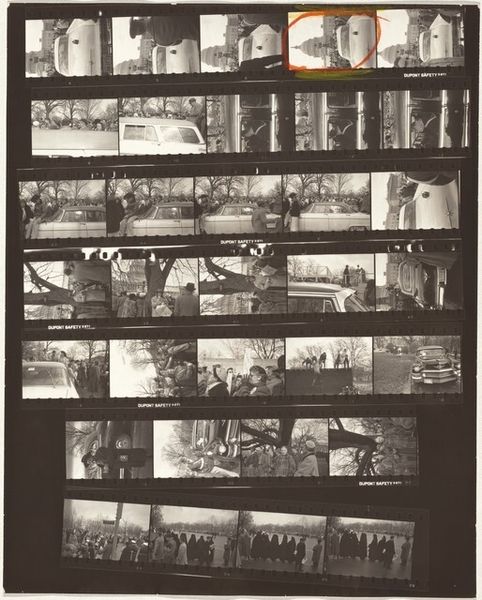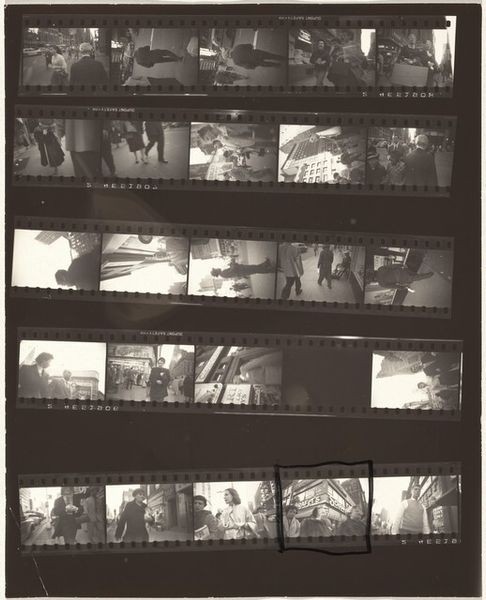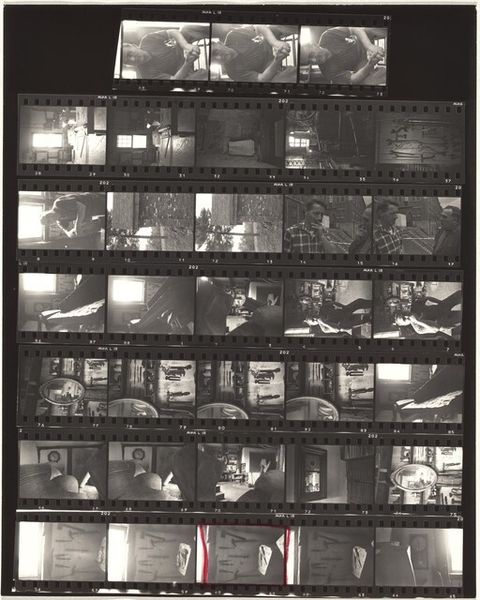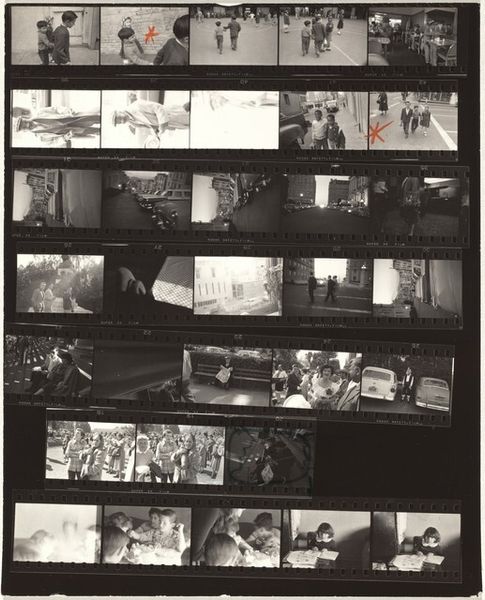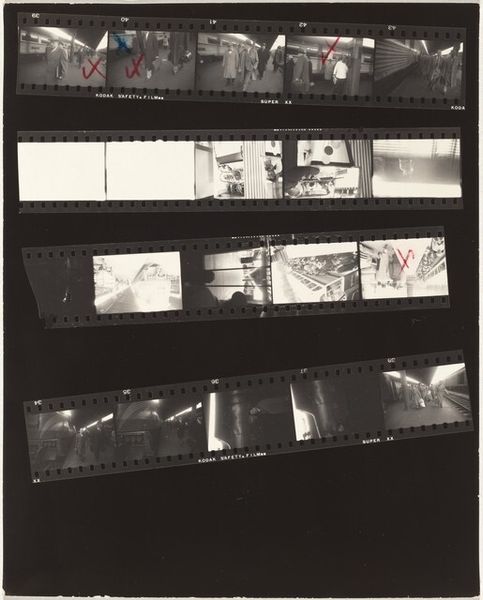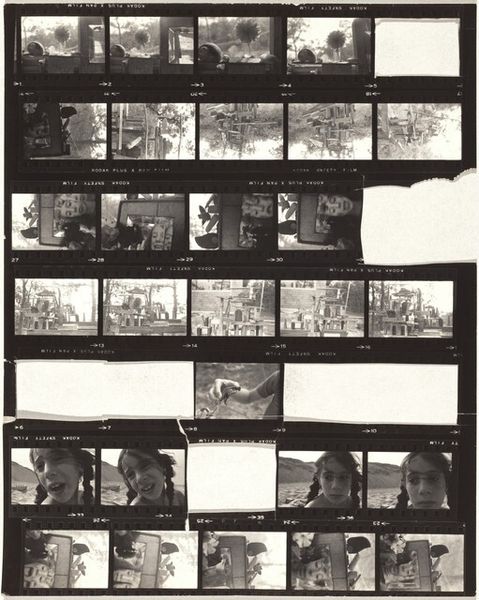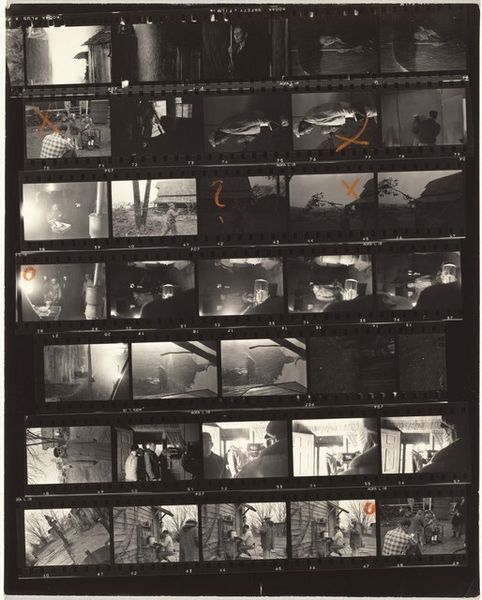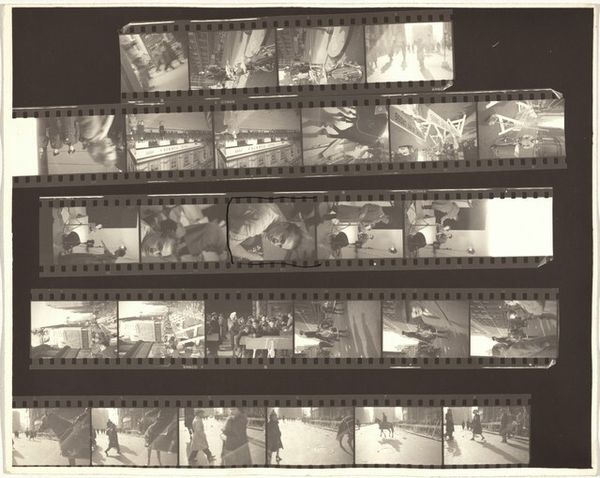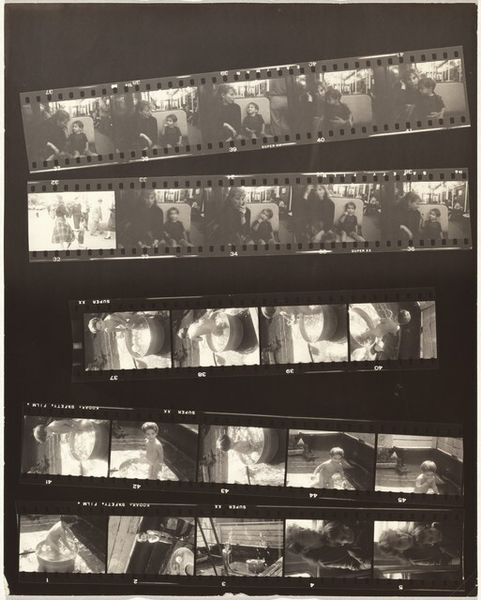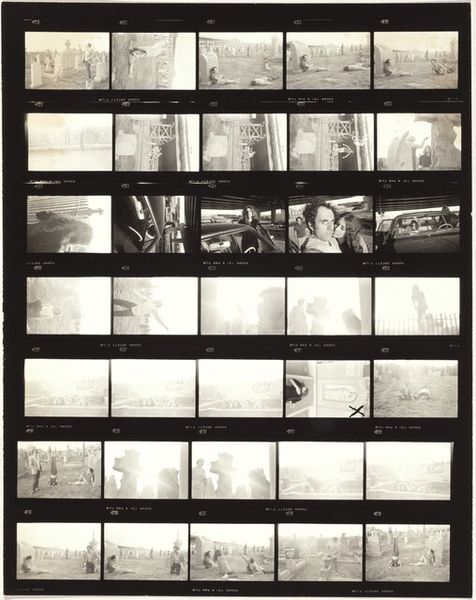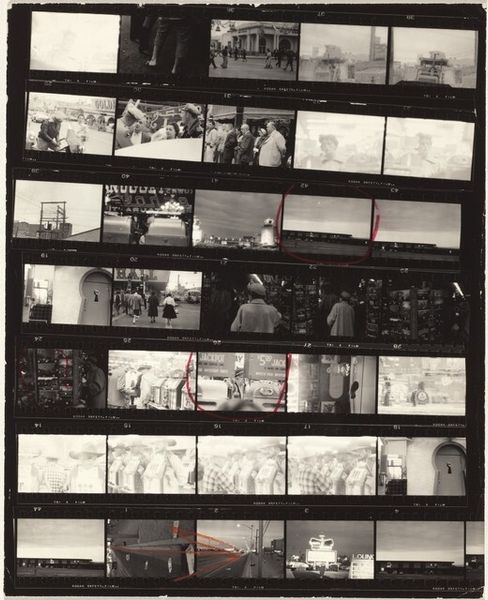
Dimensions: overall: 25.2 x 20.2 cm (9 15/16 x 7 15/16 in.)
Copyright: National Gallery of Art: CC0 1.0
Curator: Here we have Robert Frank's gelatin-silver print "From the bus 43," taken in 1958. It's a fascinating contact sheet, isn't it? Editor: It strikes me as raw, almost accidental. There's a chaotic energy, yet it’s clearly intentional in its assembly. Curator: Absolutely. Frank was very deliberate in his deconstruction of photographic conventions. The contact sheet as the final product is revealing, and it's an interesting choice of presentation, forcing us to engage with the editing process itself. It subverts the tradition of the single, perfect image. We see the whole strip, including multiple exposures and outtakes. It presents a narrative beyond any individual frame, almost like the raw ingredients for the image. What stories do you think the sheet assembles and tells? Editor: Given the time period, this likely involves economic issues relating to materiality in the USA during this era, right? You have people queuing outside of a market for food and interacting at that place; this all leads into the labor element of this image that provides an urban overview into consumer habits. How does this body of work fit into Frank's larger exploration of American society, particularly its underbelly? Curator: Exactly, a great and useful note to mention consumerism; the image serves as a potent document of social alienation and urban life and explores questions about power dynamics, marginalization, and the construction of identity during the era, particularly about what "being American" at the time truly looked like and represented. And the visual language, which breaks with established norms, can be interpreted as a rebellion against those established norms. It is important to recognize the time it was created. This was around when America had very serious Civil Rights issues and also at the height of the Cold War between the US and the Soviet Union, leading the image and collection to take on extra importance. Editor: Considering its form as a contact sheet, what do the borders and markings—the indexical elements—add to the work's impact? What about the film type, or printing practices he followed? Curator: The materiality is crucial. The contrasty graininess amplifies the sense of grit and immediacy; this pushes back on the era and standards from prior that photography be as clear as possible. But most importantly it allows to work against standards on Black and White photography at the time that are more related to glamour. Frank is stripping away artifice. The visible frame numbers and text further ground the image in the real, tangible process of its creation. Ultimately this contact sheet functions as both artifact and artistic statement, capturing a moment in time and revealing the layers of the image's production, highlighting labor, material and Americanism that exists at that time. Editor: Thanks, I think you’ve illuminated so much for our listeners.
Comments
No comments
Be the first to comment and join the conversation on the ultimate creative platform.
